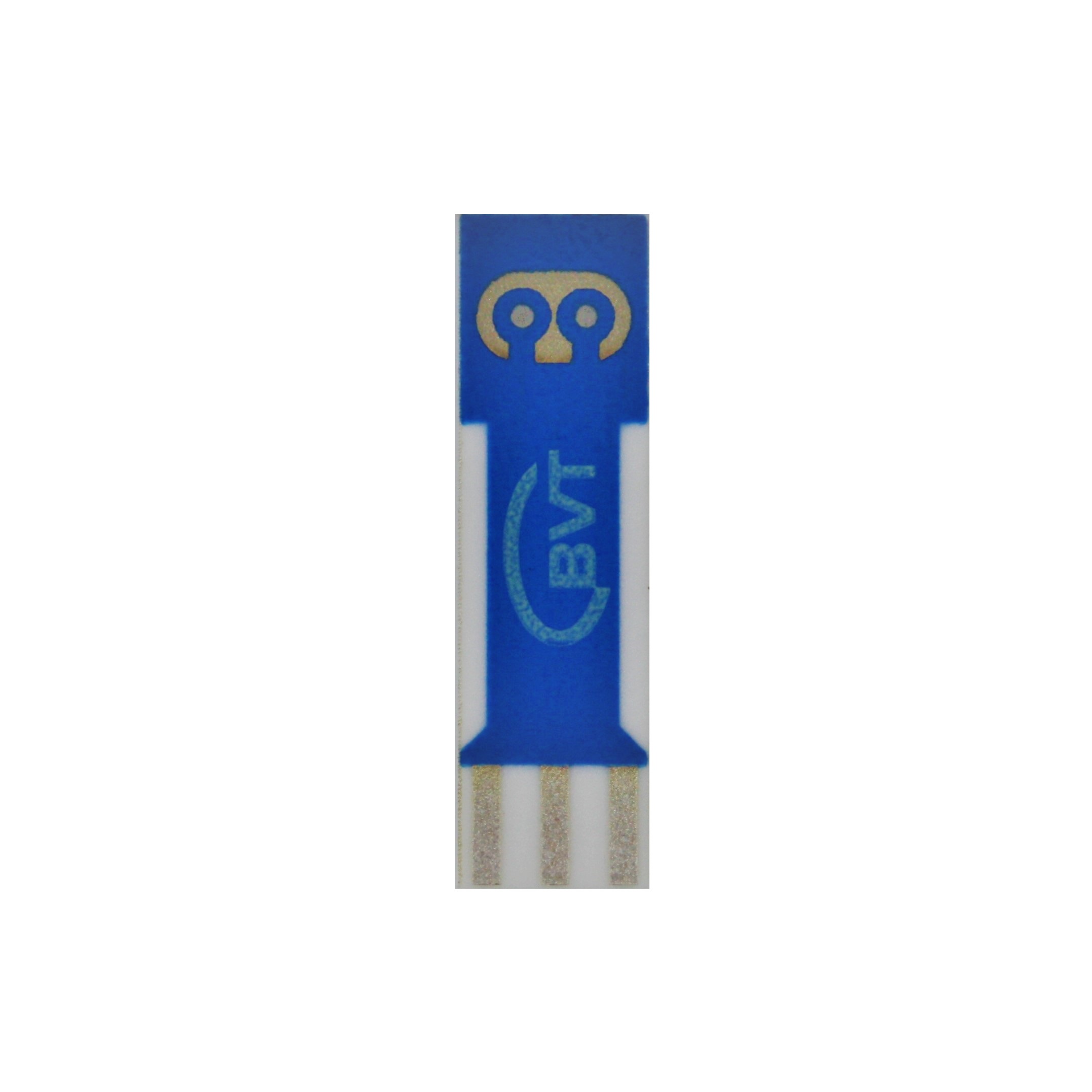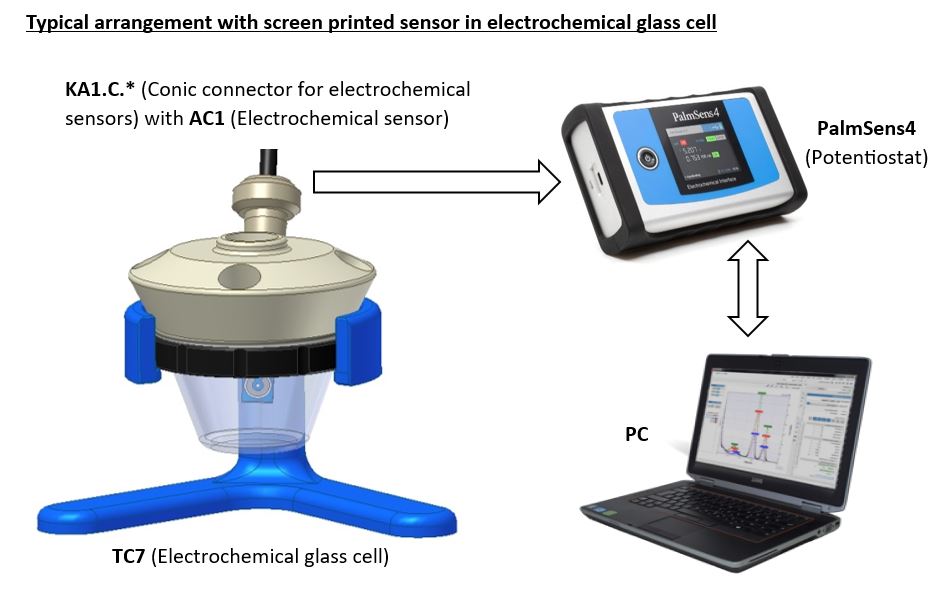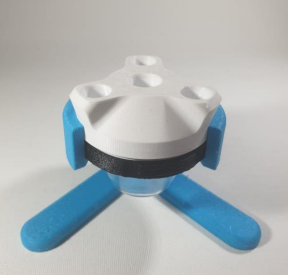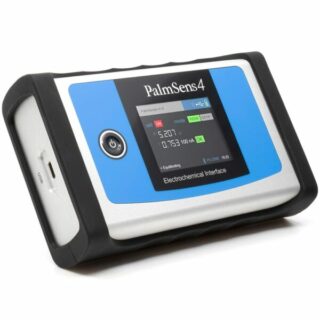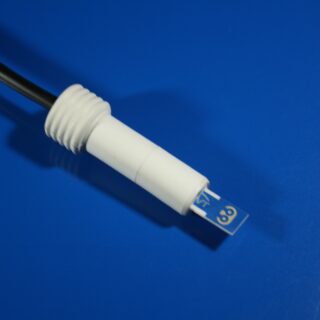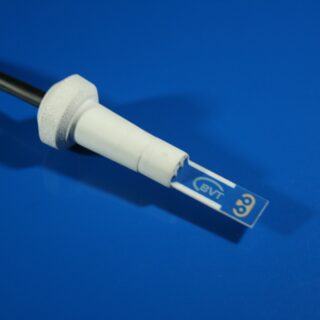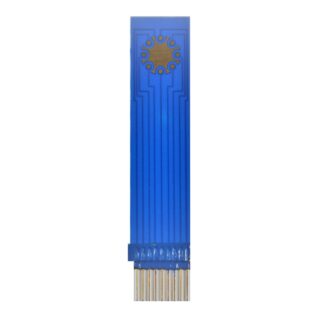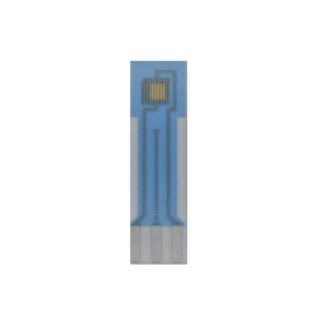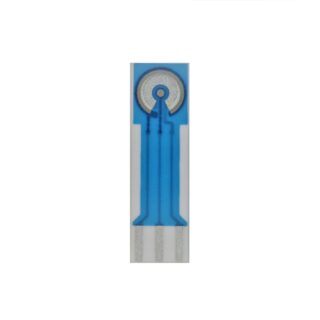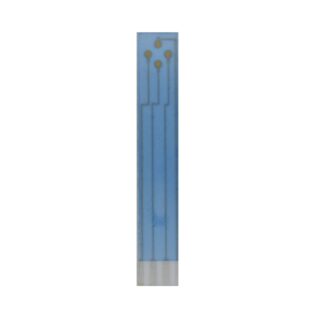Category
- Custom made glass products
- CUSTOMER SERVICES
- NEW PRODUCTS
- Sensors and electrodes
- Custom made and Modified Screen Printed Electrodes
- Stirrers
- Cables and connectors
- Cell
- Potentiostats
- Manual Screen Printer
- Minithermostat
- Pumps
- Accessories
- Kits & Sets
- Discounted SPEs (at a reduced price with visual defects/inconsistancies, but fully functional)
AC2 Electrochemical sensor
Amperometric two-electrode sensor with two working electrodes made by thick film technology.
Dimensions: 25.4 x 7.26 x 0.63 mm
WE material: Au/Pt, Au, Pt, Ag, C
The sensor is formed on a corundum ceramic base. On to this surface two working electrodes, and one reference electrode are applied. The working and the reference electrodes can be made of variety of materials. At the end of the sensor there is a contacting field which is connected with the active part by the silver conducting paths which are covered by a dielectric protection layer. Different bio-chemically active substance can be immobilised on the working electrode to create a biosensor.
You may also like…
-
TC7 Electrochemical Glass Cell
Read moreThe TC7 is a low cost Glass Cell that is ideal for students and basic lab measurements.
The TC7 comes with a stand, specially designed for it, and the stand provides more stability and ease of use.
The Borosilicate glass cell serves for electrochemical measurements. Cell openings are designed for the SPE Electrochemical Sensors Connector KA1.C,Classical Electrodes WCEc, ACEc, RCEc, STP1.*
Stoppers for Cells, and Stirrer’s ST1 and ST3 separately.
The device enables the measurement with inserted samples.
-
PalmSens4
Read moreThe PalmSens4, is a USB and battery powered Potentiostat, Galvanostat, and optional a Frequency Response Analyser (FRA) for Electrochemical Impedance Spectroscopy (EIS).
Compact, versatile and powerful
- (Bi)Potentiostat / Galvanostat / Impedance Analyzer
- FRA / EIS: 10 μHz up to 1 MHz
- 9 current ranges: 100 pA to 10 mA
- 18-bit resolution
- Bluetooth or USB connection
The PalmSens4 has a large potential range (-5V to 5V or -10V to 10V) and current range (100 pA to 10 mA) with a high resolution and low noise. The economical PalmSens4 is a complete laboratory instrument but its compact and rugged design makes it also ideal for field work.
Connecting via Bluetooth guarantees a perfectly floating measurement.
More information can be found through the link: https://www.palmsens.com/product/palmsens4/
Configurable
PalmSens4 comes in different configurations:
- ±5 V or ±10 V potential range
- EIS/FRA with maximum frequency of 100 kHz or 1 MHz
- optional BiPotentiostat module for second WE
- optional iR-Compensation
Standard included
- Rugged carrying case
- High quality, double shielded cell cable with
2 mm banana connectors for Working, Counter, Reference electrode and Ground - Crocodile clips
- Dummy cell
- USB cable
- Manual and Quick Start document
- PSTrace software for Windows
Related products
-
AC9C.WSP Electrochemical sensor
Read moreAmperometric sensor with an array of 8 working electrodes and 1 common reference electrode made by sputtering with integrated connector
Dimensions: 59.0 x 12.7 x 0.63 mm
WE material: Au
The sensor is formed on corundum polished ceramic base. On to this surface eight working electrodes, and the reference electrode are applied by sputtering. The working electrodes are made of gold. At the end of the sensor there is an integrated connector. It is connected with the active part by the silver conducting paths which are covered by a dielectric protection layer. Different bio-chemically active substances can be immobilised on the working electrodes of the sensor.
-
CC1 Electrochemical sensor
Read moreA conductivity sensor made by thick film technology with interdigitated structure of electrodes
Dimensions: 25.4 x 7.26 x 0.63 mm
WE material: Au/Pt, Au, Pt, Ag, C
The sensor is formed on a corundum ceramic base. Onto this surface two interdigitated structures of electrodes are applied. The electrodes are made of Platinum-Gold alloy in standard product CC1.WS. At the end of the sensor there is a contact which is connected with the active part by the silver conducting path which is covered by a dielectric protection layer. A bio-chemically active substance can be immobilised on the working electrode of the sensor.
-
AC1.GOD Electrochemical sensor
Read moreAmperometric Glucose Oxidase three-electrode sensor with patented structure made by thick film technology
Dimensions: 25.4 x 7.26 x 0.63 mm
WE material: Pt
Sensor Usage: Amperometric measurement of β-D-Glucose concentration in liquid samples (from 0 °C to 45 °C)
Glucose Oxidase (GOD) from Aspergillus Niger is immobilized on the active surface of a working electrode of amperometric substrate AC1.W2.RS.
The diameter of the immobilized bioactive membrane is 2 mm and the mean applied activity is 1 unit/mm2.
* For this product, we recommend our customers use the Training Service from BVT.
(https://bvt.cz/produkt/offer-of-long-term-automated-measurements-on-bvt-apparatus/)
-
AC8 Electrochemical sensor
Read moreAmperometric sensor with 4 working electrodes made by thick film technology
Dimensions: 50.8 x 8.47 x 0.63 mm
WE material: Au/Pt, Au, Pt, Ag, C
The sensor is formed on a corundum ceramic base. On to this surface four working electrodes are applied. Electrodes are made of variety of materials (see below). At the end of the sensor there is a contact. It is connected with the active part by the silver conducting path which is covered by a dielectric protection layer. Different bio-chemically active substances can be immobilised on working electrodes of the sensor.

